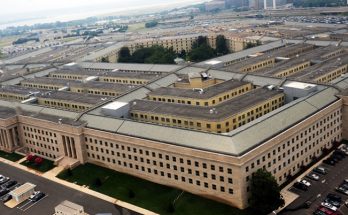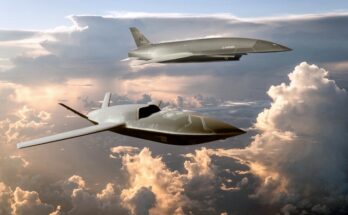
After several tense days in Iraq, the U.S. on January 2 carried out precision air strikes on a pair of vehicles close to Baghdad International Airport, resulting in the deaths of several top members of Iraqi militia groups, including Abu Mahdi al-Muhandis as well as the commander of the external wing of Iran’s Islamic Revolutionary Guard Corps (IRGC), Qassem Soleimani. The death of Soleimani, in particular, is a major development in what has been a long-running conflict between the U.S. and Iran throughout the Middle East, and his death points to an escalation in the standoff between the two.
The chain of events leading to Soleimani’s killing began late in December. A rocket attack struck a base close to Kirkuk, resulting in the death of a U.S. civilian contractor. U.S. military personnel, as well as Iraqi forces, were wounded in the attack. In response, the U.S. carried out retaliatory air strikes in both Iraq and Syria on the suspected perpetrator of the attack, an Iraqi militia known as Kataib Hezbollah. These strikes killed over two dozen members of the group, which in turn prompted a riot outside the American Embassy in Baghdad during which many Iraqis, including supporters of Kataib Hezbollah, attempted to storm the diplomatic compound. They spent the night on New Year’s Eve camped around the grounds before being ordered to withdraw by militia commanders. Following the riots, U.S. Defense Secretary Mark Esper warned that the U.S. would “take pre-emptive action as well to protect American forces, protect American lives” if there was any indication of an upcoming attack. U.S. President Donald Trump had ominously wrote on Twitter that Iran would be “held fully responsible” for any damage, saying that the country would “pay a very BIG PRICE” (emphasis the president’s).
Soleimani’s death quickly drew condemnation from Iran. Speaking after the news was announced, Supreme Leader Ayatollah Ali Khamenei said that “a harsh revenge awaits” the U.S. for the killing of the general. Maj. Gen. Abdolrahim Mousavi, who commands the Iranian Army, said that the death of Soleimani “will not remain unanswered.” Commodity markets have signaled concern about escalation, with oil prices jumping 4 percent in the immediate aftermath of the air strikes.
While an Iranian response is all but certain, it is less clear what form the retaliation will take. Iran’s conventional military is not in a position to confront the U.S. military on a peer-to-peer basis – much of the force structure is made up of either equipment procured decades ago or ad-hoc local solutions often amalgamating older hardware. And while Iran could damage American interests in the region, it would fare poorly in a direct conflict. But Iran’s deterrence has always been centered on the IRGC, and particularly two elements: its rocket forces and its network of allied or sympathetic militias.
Rather than attempt to compete with its regional rivals in the conventional sphere, Iran prioritized the development of its missiles, focusing on bringing their range to a level sufficient to strike as far away as Israel while maintaining some semblance of precision. In 2017, Iran demonstrated that it could use its missile arsenal in response to attacks, striking Islamic State positions in Deir ez-Zor, Syria, after a terror attack in Tehran. The results of these strikes are not quite clear, particularly as some of the missiles are said to have crashed en route, but the message to Iran’s rivals was unambiguous: the IRGC, which operates the offensive missiles, could and would use them to hit far-away enemies. Two years later, in September 2019, an apparent Iranian missile and drone attack on Saudi oil facilities brought half of Saudi Arabia’s oil production temporarily offline, underscoring the threat.
Moreover, Iran maintains a regional network of allies in the form of militias. Throughout the Islamic Republic’s existence, the country has been isolated and surrounded by hostile forces on many of its borders, leading Iran to focus on the establishment of sympathetic militias in nearby countries that could help improve the country’s deterrence. Hezbollah, in Lebanon, is the most successful product of these efforts, but Iran has also seen success in Iraq, where a number of militias that constitute the Popular Mobilization Units, an umbrella group of Iraqi militias, are directly supported by Iran. Iran has also struck up a friendship with Ansar Allah, a Yemeni rebel group that captured the capital Sana’a several years ago, though the exact nature of their relationship, outside of the transfer of arms and other support from Iran to the militia, is disputed. It is this network of friendly militias, maintained by the IRGC under the leadership of General Soleimani, that Iran has leaned on.
But Iran will be cautious in picking its targets for response and the means to achieve it. Ahead of the attacks on Saudi oil infrastructure, Iranian officials are said to have specifically ruled out any attacks on American interests for fear of prompting a fierce American response. For Iran, that risk still stands. Particularly in killing a man as powerful as Soleimani was, President Trump demonstrated that he is taking the standoff with Iran quite seriously. The U.S. moved additional forces to the Middle East throughout the last year, amid a series of tanker sabotages and the shoot-down of an American drone. President Trump said after the drone’s downing that the U.S. was “locked and loaded” for a response, but he called off a bombing due to the fact that no American personnel had been killed. The death of the American contractor and the Embassy storming appear to have him acting on what is now clearly seen as a red line.
Iran’s connections to its militias are secure. They are based on deep ties and thus will not be lost with Soleimani’s death – though the killing of Soleimani is a setback for Iran for the immediate future in terms of planning the sort of clandestine attacks that Soleimani had been in charge of for so long. In addition to Soleimani, other key members of the IRGC’s Quds Force were said to have been killed as well. The Quds Force has appointed a replacement for Soleimani, choosing his deputy, Brig. Gen. Esmael Qa’ani. Despite the decapitation at the top, the Iranian-backed militias around the region remain potent threats, particularly Hezbollah, which has a vast rocket arsenal courtesy of a history of Iranian deliveries.
Several avenues for an Iranian response are possible. The most obvious possibility would be further escalation inside Iraq, where the Iranian-backed militias are well-placed to harass installations housing American personnel. The U.S. has reinforced its presence in Iraq, and called for citizens to leave the country over concerns about what actions Iran may take inside that country. But there are other possible venues for Iran to respond. Throughout 2019, Iran showed it had the potential to disrupt commerce through the Strait of Hormuz, seizing some oil tankers. Others were mysteriously sabotaged in what the U.S. claims were Iranian actions. The Persian Gulf and adjacent waterways thus are potential sites for an Iranian retaliation. Over in Lebanon, Hezbollah could attempt actions against Israel – Iranian and militia officials pointedly included Israel in their condemnations of the American strikes on Soleimani – and, in neighboring Syria, Iran could goad sympathetic militias into action against American positions in the northeast, though previous efforts by pro-Assad government forces to do just that ended poorly for them. Hezbollah does maintain an international network that could conceivably be activated for aggressive actions such as terror attacks, rather than just revenue generation. And finally, while not a physical retaliation, Iran could engage in greater cyber activity against the U.S. and its interests.
Left virtually powerless in the escalating feud is the Iraqi government. Prime Minister Adel Abdul Mahdi decried the retaliatory strikes on Kataib Hezbollah that killed dozens of that group’s members, saying that they violated Iraq’s sovereignty. The Popular Mobilization Units, the umbrella group to which Kataib Hezbollah belongs, are technically under the authority of the Iraqi government, even if in practice many of the Iranian-backed militias exert effective autonomy from the government. Prime Minister Abdul Mahdi further condemned the killing of Soleimani, but especially also the death of al-Muhandis, “who holds an official position” in Iraq. Abdul Mahdi called the strikes an “aggression on Iraq” and warned that the spiraling situation “will light the fuse of a destructive war in Iraq, the region, and the world.” Throughout the past week, the U.S. has heavily criticized Iraq for its failure to rein in the militias, particularly amid the embassy riots.
But inaction on this matter did not come as much of a surprise, as some of these same militias are said to have been involved in the mass killings of unarmed anti-government protesters that took place across Iraq last year and which the Iraqi government failed to prevent. The Iraqi government is in a bind, as the Iranian-backed militias could certainly challenge the government’s authority and, if the government attempted to crack down, carry out violent campaigns against security forces that would threaten stability in the capital and elsewhere.
Besides the fear about an escalating crisis between the U.S. and Iran, there are two other important takeaways from the killing of Soleimani. One is that the counter-Islamic State campaign, at least as it is being carried out in Iraq, is likely to be put on ice. The group has been ousted from its territorial control, but does still maintain some presence within Iraq in various underground cells. It has not yet been able to capitalize on turbulence in Iraqi affairs, but the potential for it to do so is serious enough that the U.S. has continued anti-Islamic State operations to date. These become much more difficult, as American forces are now conceivably targets for the Iranian-backed militias. An uneasy détente prevailed throughout the war with the Islamic State; it has now been shattered.
Another takeaway is that the outlook for a new agreement between the U.S. and Iran over the latter’s nuclear accord is exceedingly bleak. The nuclear accord was already on life support. The U.S. withdrew from it in May 2018 and, from mid-2019 onward, Iran has steadily reduced its compliance with its end of the deal. Any backchannel efforts to rekindle the talks are probably now dead. It is hard to see how the two sides could hold direct negotiations at this stage.
The killing of Soleimani is perhaps one of the most consequential decisions of President Trump’s administration. What it leads to is an open question, but it will prove to be a defining feature of the legacy of his Middle East policy.
Military markets analyst, covering Eurasia, Middle East, and Africa.




